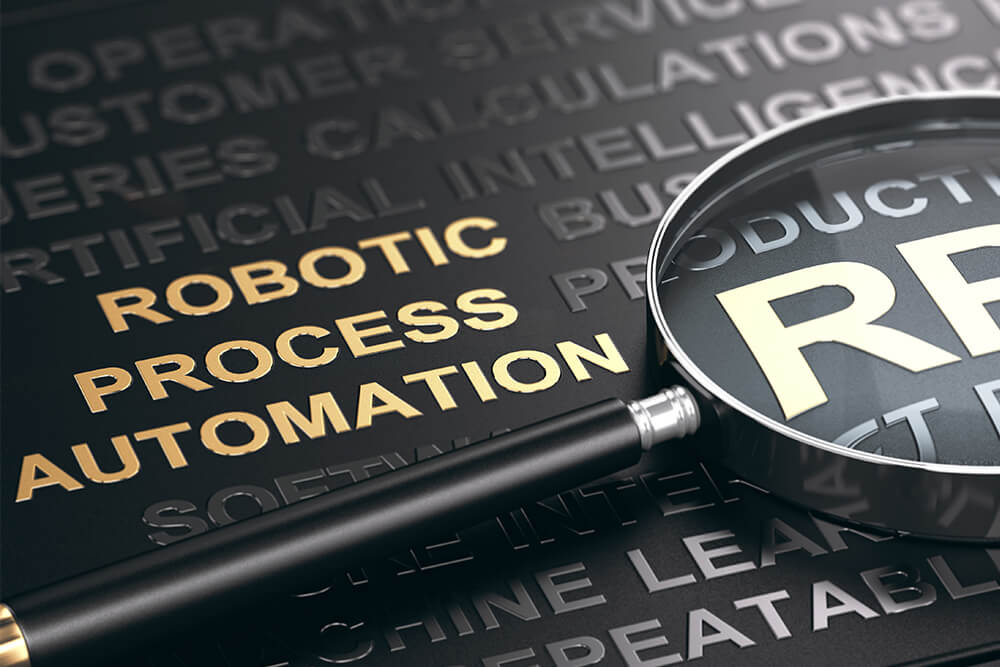Robotic Process Automation Is Coming: Here Are 5 Ways To Prepare For It
2 July 2021
Robotic process automation (or RPA) is technology designed to automate business processes that are rules-based, structured, and repetitive, thereby freeing up people to focus on more value-adding business activities. RPA is part of a wider shift towards automation, amidst a “perfect storm” of technology that encompasses AI, machine learning, big data, robotics, and the Internet of Things.

This move towards greater automation will impact every industry. In fact, analysts at Gartner have predicted that 85% of large organizations will have deployed some form of RPA by 2022, and it’s only a matter of time before RPA is routinely deployed in smaller and mid-sized firms, too. So if you haven’t yet considered the potential impact of RPA on your business, now is a good time to do so. This article will help you get started.
RPA: The one-minute explainer
When we talk about RPA, we’re not talking about the kinds of robots that are common in manufacturing settings. RPA is all about software robots – or software being deployed to carry out repetitive digital tasks, such as capturing or inputting data.
RPA is about minimizing the time spent on routine activities that are currently performed by humans. The idea is to improve productivity, reduce human error rates, and free people up to do the higher-value work that can’t yet be performed by robots, such as solving more complex customer queries or developing “big picture” strategies.
RPA shouldn’t really be thought of as new processes; RPA is all about complementing or improving existing systems and applications. As they generally require little change in physical infrastructure, RPA procedures can be relatively cheap to implement, and the benefits of freeing up huge amounts of staff time, and reducing error rates, can quickly outweigh the expense. This is why RPA is often considered a quick win.
But what does RPA look like in practice? We saw the beginnings of RPA in functions such as the auto-complete used in web forms, but today’s RPA tools have evolved into customer service chatbots (used to deal with less complex customer queries, of course). Other applications of RPA include:
· Transferring paper forms to a digital system
· Inputting and processing insurance claims
· Processing credit card applications
· Inputting new customer data into CRM systems
· Scheduling client or patient appointments
· Answering simple and repetitive tech support queries
· Processing transactions
· Retrieving information from other digital systems
Preparing your business for this key technology trend
As with everything related to technological change, business leaders can often be left scratching their heads, wondering how the new technology relates to their business and what practical steps they should take now to prepare. If you’re in the same boat, I recommend following these five simple steps:
Step 1. Educate yourself
Education is a vital part of preparing for change. Luckily, there are some fantastic RPA-related resources online that you can use to get up-to-speed. For example, RPA solutions provider UiPath has created an online academy with a number of free training courses. These courses are categorized according to the roles that need to be filled in order to deploy RPA (such as business analyst or implementation manager), with each one covering a specific step of the journey towards RPA. UiPath has also built a community of RPA developers and enthusiasts on sharing tools, tips, and strategies. Through it, you can experiment with free, customizable robots designed to help organizations understand how RPA works and where it can be useful.
Step 2. Understand what types of processes can and can’t be automated
Typically, the most suitable tasks for RPA relate to “busy work” – meaning any work that involves a great number of repetitive actions, such as opening and searching records, transferring data between different digital locations, and repetitive mouse clicks. These sorts of tasks are prime candidates for automation. At the other end of the scale, jobs that involve creative thought and human decision making generally are not suitable for automation.
Step 3. Narrow down to which tasks should be automated
Just because something can be automated doesn’t mean it should be. Here, you’ll need to identify which – of all the things it’s possible to automate – are your key priorities. I recommend focusing on those tasks that help your organization achieve its overall aims, but currently consume a disproportionate amount of employees’ time. It’s usually a good idea to go for “quick wins” first, as these will help to establish the usefulness of RPA while winning over minds that may be resistant to the idea of reducing repetitive workloads or fearful of what it could mean for jobs and organizational culture.
Step 4. Research available solutions and tools
Having decided on the best ways to deploy RPA in your organization, you can begin researching the technologies that are available and the potential partners you may need to work with to create a successful deployment. You’ll also need to think about your existing technology infrastructure at this stage. For example, is it built in a way that will allow RPA to be deployed on top of it? And what will your existing workforce need in order to capitalize fully on the time and opportunities that are unlocked for them?
Step 5. Pick your RPA partner
Of all the solutions available, which one best suits your needs? When weighing up different providers, look for those with a proven track record in your industry, and those that can help you manage the human element of the incoming change – as this will undoubtedly be a critical element of the automation process.
Robotic process automation is just one of 25 technology trends that I believe will transform our society. Read more about these key trends – including plenty of real-world examples – in my new book, Tech Trends in Practice: The 25 Technologies That Are Driving The 4th Industrial Revolution.
Related Articles
AI And The End Of Progress? Why Innovation May Be More Fragile Than We Think
By now, “smart” versions exist of just about every home appliance, gadget and gizmos we can think of. However, manufacturers continue[...]
Dreamforce 2025: Why I’m Excited About Salesforce’s Agentic Enterprise Revolution
By now, “smart” versions exist of just about every home appliance, gadget and gizmos we can think of. However, manufacturers continue[...]
The Top 5 Technology Trends For 2026
By now, “smart” versions exist of just about every home appliance, gadget and gizmos we can think of. However, manufacturers continue[...]
Dreamforce 2025: Why I’m Excited About Salesforce’s Agentic Enterprise Revolution
By now, “smart” versions exist of just about every home appliance, gadget and gizmos we can think of. However, manufacturers continue[...]
Robots And AI Are Rewriting The Future Of Surgery
By now, “smart” versions exist of just about every home appliance, gadget and gizmos we can think of. However, manufacturers continue[...]
The 8 Biggest AI Trends For 2026 That Everyone Must Be Ready For Now
By now, “smart” versions exist of just about every home appliance, gadget and gizmos we can think of. However, manufacturers continue[...]
Sign up to Stay in Touch!
Bernard Marr is a world-renowned futurist, influencer and thought leader in the fields of business and technology, with a passion for using technology for the good of humanity.
He is a best-selling author of over 20 books, writes a regular column for Forbes and advises and coaches many of the world’s best-known organisations.
He has a combined following of 4 million people across his social media channels and newsletters and was ranked by LinkedIn as one of the top 5 business influencers in the world.
Bernard’s latest book is ‘Generative AI in Practice’.










Social Media